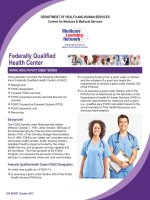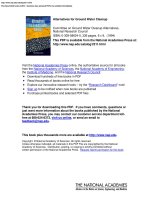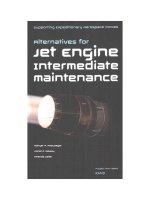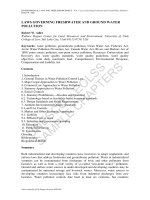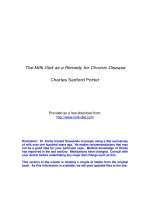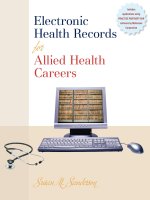Alternatives for Ground Water Cleanup potx
Bạn đang xem bản rút gọn của tài liệu. Xem và tải ngay bản đầy đủ của tài liệu tại đây (5.69 MB, 334 trang )
Visit the
National Academies Press online, the authoritative source for all books
from the
National Academy of Sciences, the National Academy of Engineering,
the
Institute of Medicine, and the National Research Council:
• Download hundreds of free books in PDF
• Read thousands of books online for free
• Explore our innovative research tools – try the “Research Dashboard” now!
• Sign up to be notified when new books are published
• Purchase printed books and selected PDF files
Thank you for downloading this PDF. If you have comments, questions or
just want more information about the books published by the National
Academies Press, you may contact our customer service department toll-
free at 888-624-8373,
visit us online, or send an email to
This book plus thousands more are available at
.
Copyright © National Academy of Sciences. All rights reserved.
Unless otherwise indicated, all materials in this PDF File are copyrighted by the National
Academy of Sciences. Distribution, posting, or copying is strictly prohibited without
written permission of the National Academies Press.
Request reprint permission for this book.
ISBN: 0-309-58624-0, 336 pages, 6 x 9, (1994)
This PDF is available from the National Academies Press at:
/> />We ship printed books within 1 business day; personal PDFs are available immediately.
Alternatives for Ground Water Cleanup
Committee on Ground Water Cleanup Alternatives,
National Research Council
Alternatives for
Ground Water Cleanup
Committee on Ground Water Cleanup Alternatives
Water Science and Technology Board
Board on Radioactive Waste Management
Commission on Geosciences, Environment, and Resources
NATIONAL ACADEMY PRESS
Washington, D.C. 1994
i
About this PDF file: This new digital representation of the original work has been recomposed from XML files created from the original paper book, not from the
original typesetting files. Page breaks are true to the original; line lengths, word breaks, heading styles, and other typesetting-specific formatting, however, cannot be
retained, and some typographic errors may have been accidentally inserted. Please use the print version of this publication as the authoritative version for attribution.
Copyright © National Academy of Sciences. All rights reserved.
Alternatives for Ground Water Cleanup
/>National Academy Press 2101 Constitution Avenue, N.W. Washington, D.C. 20418
NOTICE: The project that is the subject of this report was approved by the Governing Board of the
National Research Council, whose members are drawn from the councils of the National Academy
of Sciences, the National Academy of Engineering, and the Institute of Medicine. The members of
the committee responsible for the report were chosen for their special competences and with regard
for appropriate balance.
This report has been reviewed by a group other than the authors according to procedures
approved by a Report Review Committee consisting of members of the National Academy of Sci-
ences, the National Academy of Engineering, and the Institute of Medicine.
Support for this project was provided by the U.S. Environmental Protection Agency under
Agreement No. CR 818700-01-0, the U.S. Department of Energy under Agreement Nos. DE-
AL01-89DP48070 and DE-AC01-89DP8070, Chevron USA, Inc., and the Coalition on Superfund.
Library of Congress Cataloging-in-Publication Data
Alternatives for ground water cleanup / Committee on Ground Water Cleanup Alternatives,
Water Science and Technology Board, Board on Radioactive Waste Management, Commission on
Geosciences, Environment, and Resources, National Research Council.
p. cm.
Includes bibliographical references and index.
ISBN 0-309-04994-6
1. Groundwater—Purification. I. National Research Council (U.S.). Committee on
Ground Water Cleanup Alternatives.
TD426.A48 1994
363.73'94—dc20 94-29573
CIP
Cover art by Y. David Chung. Title design by Rumen Buzatov. Chung and Buzatov are graduates of
the Corcoran School of Art in Washington, D.C. Chung has exhibited widely throughout the coun-
try, including at the Whitney Museum in New York, the Washington Project for the Arts in Wash-
ington, D.C., and the Williams College Museum of Art in Williamstown, Massachusetts.
The cover illustration shows how the elements of weather, geography, and underground strata
all combine to affect our ground water.
Copyright 1994 by the National Academy of Sciences. All rights reserved.
Printed in the United States of America
First Printing, June 1994
Second Printing, July 1995
ii
About this PDF file: This new digital representation of the original work has been recomposed from XML files created from the original paper book, not from the
original typesetting files. Page breaks are true to the original; line lengths, word breaks, heading styles, and other typesetting-specific formatting, however, cannot be
retained, and some typographic errors may have been accidentally inserted. Please use the print version of this publication as the authoritative version for attribution.
Copyright © National Academy of Sciences. All rights reserved.
Alternatives for Ground Water Cleanup
/>COMMITTEE ON GROUND WATER CLEANUP
ALTERNATIVES
MICHAEL C. KAVANAUGH, Chair, ENVIRON Corporation, Emeryville,
California
JAMES W. MERCER, Vice-Chair, GeoTrans, Inc., Sterling, Virginia
LINDA M. ABRIOLA, University of Michigan, Ann Arbor
CHARLES B. ANDREWS, S.S. Papadopulos & Associates, Inc., Bethesda,
Maryland
MARY JO BAEDECKER, U.S. Geological Survey, Reston, Virginia
EDWARD J. BOUWER, Johns Hopkins University, Baltimore, Maryland
PATRICIA A. BUFFLER, University of California, Berkeley
ROBERT E. CONNICK, University of California, Berkeley
RICHARD A. CONWAY, Union Carbide Corporation, South Charleston, West
Virginia
RALPH C. D'ARGE, University of Wyoming, Laramie
LINDA E. GREER, Natural Resources Defense Council, Washington, D.C.
JOSEPH H. HIGHLAND, ENVIRON Corporation, Princeton, New Jersey
DOUGLAS M. MACKAY, Centre for Groundwater Research, University of
Waterloo, Waterloo, Ontario, Canada
GLENN PAULSON, Illinois Institute of Technology, Chicago, liaison to the
Board on Radioactive Waste Management
LYNNE M. PRESLO, ICF-Kaiser Engineers, Oakland, California
PAUL V. ROBERTS, Stanford University, Stanford, California
WILLIAM J. WALSH, Pepper, Hamilton & Scheetz, Washington, D.C.
C. HERB WARD, Rice University, Houston, Texas
MARCIA E. WILLIAMS, Williams & Vanino, Inc., Los Angeles, California
Staff
JACQUELINE A. MACDONALD, Study Director
GREGORY K. NYCE, Senior Project Assistant
ANGELA F. BRUBAKER, Project Assistant
GREICY AMJADIVALA, Project Assistant
GEORGE Z. HORNBERGER, Intern
CINDY F. KLEIMAN, Technical Consultant
GINO BIANCHI-MOSQUERA, Technical Consultant
iii
About this PDF file: This new digital representation of the original work has been recomposed from XML files created from the original paper book, not from the
original typesetting files. Page breaks are true to the original; line lengths, word breaks, heading styles, and other typesetting-specific formatting, however, cannot be
retained, and some typographic errors may have been accidentally inserted. Please use the print version of this publication as the authoritative version for attribution.
Copyright © National Academy of Sciences. All rights reserved.
Alternatives for Ground Water Cleanup
/>WATER SCIENCE AND TECHNOLOGY BOARD
DANIEL A. OKUN, Chair, University of North Carolina, Chapel Hill
A. DAN TARLOCK, Vice-Chair, Illinois Institute of Technology, Chicago-
Kent College of Law, Chicago
J. DAN ALLEN, Chevron USA, Inc., New Orleans, Louisiana
PATRICK L. BREZONIK, University of Minnesota, St. Paul
KENNETH D. FREDERICK, Resources for the Future, Washington, D.C.
DAVID L. FREYBERG, Stanford University, Stanford, California
WILFORD R. GARDNER, University of California, Berkeley
WILLIAM L. GRAF, Arizona State University, Tempe
THOMAS M. HELLMAN, Bristol-Myers Squibb Company, New York, New
York
ROBERT J. HUGGETT, College of William and Mary, Gloucester Point,
Virginia
CHARLES C. JOHNSON, Consultant, Bethesda, Maryland
WILLIAM M. LEWIS, JR., University of Colorado, Boulder
CAROLYN H. OLSEN, Brown and Caldwell, Atlanta, Georgia
CHARLES R. O'MELIA, Johns Hopkins University, Baltimore, Maryland
STAVROS S. PAPADOPULOS, S.S. Papadopulos & Associates, Inc.,
Bethesda, Maryland
BRUCE E. RITTMANN, Northwestern University, Evanston, Illinois
JOY B. ZEDLER, San Diego State University, San Diego, California
Staff
STEPHEN D. PARKER, Staff Director
SARAH CONNICK, Senior Staff Officer
SHEILA D. DAVID, Senior Staff Officer
CHRIS ELFRING, Senior Staff Officer
GARY D. KRAUSS, Staff Officer
JACQUELINE A. MACDONALD, Staff Officer
M. JEANNE AQUILINO, Administrative Associate
ANITA A. HALL, Administrative Assistant
GREGORY K. NYCE, Senior Project Assistant
MARY BETH MORRIS, Senior Project Assistant
ANGELA F. BRUBAKER, Project Assistant
iv
About this PDF file: This new digital representation of the original work has been recomposed from XML files created from the original paper book, not from the
original typesetting files. Page breaks are true to the original; line lengths, word breaks, heading styles, and other typesetting-specific formatting, however, cannot be
retained, and some typographic errors may have been accidentally inserted. Please use the print version of this publication as the authoritative version for attribution.
Copyright © National Academy of Sciences. All rights reserved.
Alternatives for Ground Water Cleanup
/>BOARD ON RADIOACTIVE WASTE MANAGEMENT
CHRIS G. WHIPPLE, Chair, Kaiser Engineers, Oakland, California
CHARLES FAIRHURST, Vice-Chair, University of Minnesota, Minneapolis
JOHN F. AHEARNE, Sigma Xi, The Scientific Research Society, Research
Triangle Park, North Carolina
COLIN J. ALLAN, Whiteshell Laboratory, Pinawa, Manitoba, Canada
JEAN M. BAHR, University of Wisconsin, Madison
LYNDA BROTHERS, Davis Wright Tremaine, Seattle, Washington
SOL BURSTEIN, Milwaukee, Wisconsin
MELVIN W. CARTER, Atlanta, Georgia
CARON CHESS, Rutgers University, New Brunswick, New Jersey
E. WILLIAM COLGLAZIER, National Academy of Sciences, Washington, D.C.
PAUL P. CRAIG, University of California, Davis
B. JOHN GARRICK, PLG, Inc., Newport Beach, California
ROBERT D. HATCHER, University of Tennessee, Knoxville
PERRY L. McCARTY, Stanford University, Stanford, California
FRED W. McLAFFERTY, Cornell University, Ithaca, New York
H. ROBERT MEYER, Keystone Scientific, Inc., Fort Collins, Colorado
D. KIRK NORDSTROM, U.S. Geological Survey, Boulder, Colorado
GLENN PAULSON, Illinois Institute of Technology, Chicago
Staff
CARL A. ANDERSON, Staff Director
PETER B. MYERS, Staff Director, retired April 30, 1993
INA B. ALTERMAN, Senior Staff Officer
ROBERT S. ANDREWS, Senior Staff Officer
KARYANIL T. THOMAS, Senior Staff Officer
DANA CAINES, Administrative Associate
VERNA BOWEN, Administrative Assistant
LISA CLENDENING, Administrative Assistant
GAYLENE DUMOUCHEL, Administrative Assistant
REBECCA BURKA, Project Assistant
DENNIS DuPREE, Project Assistant
ELIZABETH LANDRIGAN, Project Assistant
v
About this PDF file: This new digital representation of the original work has been recomposed from XML files created from the original paper book, not from the
original typesetting files. Page breaks are true to the original; line lengths, word breaks, heading styles, and other typesetting-specific formatting, however, cannot be
retained, and some typographic errors may have been accidentally inserted. Please use the print version of this publication as the authoritative version for attribution.
Copyright © National Academy of Sciences. All rights reserved.
Alternatives for Ground Water Cleanup
/>COMMISSION ON GEOSCIENCES, ENVIRONMENT,
AND RESOURCES
M. GORDON WOLMAN, Chair, Johns Hopkins University, Baltimore,
Maryland
PATRICK R. ATKINS, Aluminum Company of America, Pittsburgh,
Pennsylvania
PETER EAGLESON, Massachusetts Institute of Technology, Cambridge
EDWARD A. FRIEMAN, Scripps Institution of Oceanography, La Jolla,
California
W. BARCLAY KAMB, California Institute of Technology, Pasadena
JACK E. OLIVER, Cornell University, Ithaca, New York
FRANK L. PARKER, Vanderbilt University, Nashville, Tennessee
RAYMOND A. PRICE, Queen's University at Kingston, Ontario, Canada
THOMAS C. SCHELLING, University of Maryland, College Park
LARRY L. SMARR, University of Illinois, Urbana-Champaign
STEVEN M. STANLEY, Johns Hopkins University, Baltimore, Maryland
VICTORIA J. TSCHINKEL, Landers and Parsons, Tallahassee, Florida
WARREN WASHINGTON, National Center for Atmospheric Research,
Boulder, Colorado
EDITH BROWN WEISS, Georgetown University Law Center, Washington,
D.C.
Staff
STEPHEN RATTIEN, Executive Director
STEPHEN D. PARKER, Associate Executive Director
MORGAN GOPNIK, Assistant Executive Director
JEANETTE SPOON, Administrative Officer
SANDI FITZPATRICK, Administrative Associate
ROBIN ALLEN, Senior Project Assistant
vi
About this PDF file: This new digital representation of the original work has been recomposed from XML files created from the original paper book, not from the
original typesetting files. Page breaks are true to the original; line lengths, word breaks, heading styles, and other typesetting-specific formatting, however, cannot be
retained, and some typographic errors may have been accidentally inserted. Please use the print version of this publication as the authoritative version for attribution.
Copyright © National Academy of Sciences. All rights reserved.
Alternatives for Ground Water Cleanup
/>Preface
"A little water clears us of this deed"
Macbeth, Act II, ii
Over the past 15 years, evidence has accumulated that the nation's ground
water resource, which supplies more than 50 percent of the population's
drinking water, is threatened not only by excessive overdrafts but also by
contamination caused by past and present industrial, agricultural, and
commercial activities. In the United States, it is estimated that more than
300,000 sites may have contaminated soil or ground water requiring some form
of remediation (see Table 1-2 in Chapter 1). The potential cost of these remedial
activities may be as large as $750 billion in 1993 dollars to be spent over the
next 20 to 30 years (see Chapter 1). The magnitude of the problem may be
equally significant in other industrialized countries.
The U.S. public response to this growing perception of a threatened
resource with unknown human health and ecological impacts has generally been
to demand restoration of the ground water to drinking water standards (although
the cleanup goal varies with the site, as discussed in Chapter 6). This goal of
restoration to drinking water standards is currently the primary driver of ground
water remediation activities at most sites regulated under the Comprehensive
Environmental Response, Compensation, and Liability Act of 1980, also known
as the Superfund act. Restoration to potable standards has also been the goal at
other sites regulated under state laws and in some cases at sites regulated under
the Resource Conservation and Recovery Act.
The technological response to these statutory and regulatory demands over
the past decade has almost exclusively been the application
PREFACE vii
About this PDF file: This new digital representation of the original work has been recomposed from XML files created from the original paper book, not from the
original typesetting files. Page breaks are true to the original; line lengths, word breaks, heading styles, and other typesetting-specific formatting, however, cannot be
retained, and some typographic errors may have been accidentally inserted. Please use the print version of this publication as the authoritative version for attribution.
Copyright © National Academy of Sciences. All rights reserved.
Alternatives for Ground Water Cleanup
/>of so-called "pump-and-treat" technology. Simply put, this technology involves
extracting water from the ground below the water table using standard water-
well technology. The extracted and contaminated water is then treated with
established above-ground technologies such as air stripping or adsorption on
granular activated carbon. In essence, pump-and-treat technology attempts to
flush out the contaminants and to return the contaminated area to a condition in
which water drawn from wells will meet drinking water standards without
further treatment. However, in contrast to the suggestion from Lady Macbeth
quoted above, a very large amount of water is often required to flush out even
modest amounts of contaminants, and the amount of water required to rid a site
of contamination is often unimaginably large. In essence, the United States has
been conducting a large-scale national testing program to determine if
restoration of contaminated aquifers is achievable within reasonable time
frames and at an affordable cost.
The exact number of pump-and-treat systems currently in operation in the
United States is unknown, but it may well exceed 3,000. A sufficient history of
operation of this technology now exists to assess its efficacy. Unfortunately,
and some would say not surprisingly, the effectiveness of this technology to
restore contaminated aquifers seems quite limited. This has led to a widely held
view that pump-and-treat is a failed technology and should be rejected as a
technique for ground water remediation. Thus, the United States and other
industrialized nations, as well as developing nations, are confronted with a
major dilemma: how to protect human health and the environment from
contaminated ground water without wasting resources pursuing technical
strategies that appear unable to achieve agreed-upon societal goals. A further
significant problem is how to convey these technical limitations to a public that
has grown increasingly skeptical of technologists.
In response to this dilemma, the National Research Council (NRC)
established a committee of experts to analyze the major technical and public
policy issues arising from technical limits to aquifer remediation. The
Committee on Ground Water Cleanup Alternatives was established through two
boards within the NRC: the Water Science and Technology Board and the
Board on Radioactive Waste Management. Financial support for this effort was
provided by the Environmental Protection Agency (EPA), the Department of
Energy (DOE), the Coalition on Superfund, and Chevron Corporation. The
boards chose 19 experts to serve on the committee, representing a broad range
of scientific and technical disciplines and stakeholders in the debate over
ground water remediation.
The scope of the committee's charge included the following questions:
PREFACE viii
About this PDF file: This new digital representation of the original work has been recomposed from XML files created from the original paper book, not from the
original typesetting files. Page breaks are true to the original; line lengths, word breaks, heading styles, and other typesetting-specific formatting, however, cannot be
retained, and some typographic errors may have been accidentally inserted. Please use the print version of this publication as the authoritative version for attribution.
Copyright © National Academy of Sciences. All rights reserved.
Alternatives for Ground Water Cleanup
/>• What are the capabilities of pump-and-treat systems?
• What are the limits, if any, to contaminant removal from the subsurface?
• What are the capabilities of alternative or innovative technologies for
subsurface remediation, and what, if any, are the barriers to the use of
these technologies?
• What are the socioeconomic consequences of the possible failure of
ground water remediation?
• What are the possible alternative goals for ground water remediation,
and what factors should be considered in setting those goals?
• What policy alternatives should be pursued to reflect the technical
limitations to aquifer remediation?
The committee undertook a thorough evaluation of existing information
related to subsurface remediation. During nine meetings held over the past two
years, the committee heard reports from numerous private and public groups on
all aspects of ground water and soil remediation. Prominent among these were
presentations by policy analysts from the EPA's Office of Solid Waste and
Emergency Response (including its Technology Innovation Office), technical
specialists from the EPA's Ada, Oklahoma, ground water research laboratory,
researchers working on DOE efforts to deal with ground water and soil
contamination at DOE facilities, and DOE employees working on technology
development for environmental restoration. The committee also solicited views
of industry trade groups, consultants, contractors, impacted parties, and
environmental groups. Finally, the committee relied on the in-depth experience
and expertise of the committee members, most of whom are recognized leaders
in the technical, economic, risk, and policy debates surrounding this complex
subject.
Although the committee was able to review data from only a small number
of sites (approximately 80) where pump-and-treat systems have been installed,
there was strong consensus that these sites represented the range of conditions
encountered at the majority of sites with contaminated ground water. One
dominant characteristic that surfaced in all cases was the high degree of
uncertainty associated with the task of subsurface remediation. These
uncertainties begin with limitations on site characterization and the ability to
identify the nature and extent of the contamination in complex, multilayered,
and heterogeneous geologic environments, in which key physical, chemical, or
biological characteristics can vary by orders of magnitude on the scale of
centimeters. They end with uncertainties about the efficacy of any subsurface
remediation technology selected for the task in the face of this highly uncertain
hydrogeologic and geochemical environment. In between these end points, the
PREFACE ix
About this PDF file: This new digital representation of the original work has been recomposed from XML files created from the original paper book, not from the
original typesetting files. Page breaks are true to the original; line lengths, word breaks, heading styles, and other typesetting-specific formatting, however, cannot be
retained, and some typographic errors may have been accidentally inserted. Please use the print version of this publication as the authoritative version for attribution.
Copyright © National Academy of Sciences. All rights reserved.
Alternatives for Ground Water Cleanup
/>difficult selection of appropriate remedial actions becomes exceedingly
complex due to uncertainties in analytical models used to predict the fate and
transport of contaminants and uncertainties in the science of risk assessment.
The problem becomes even more intractable when these uncertainties are
injected into the litigious environment that exists in the United States. This
unusual degree of uncertainty significantly complicates debates about the
technical, institutional, and public policy strategies that should be pursued to
resolve ground water contamination.
The document that follows provides in my view the most comprehensive
treatment of the issues arising from technical and institutional limitations on
ground water remediation yet available. Six subcommittees chaired by
committee members prepared the various chapters in the report; lively debates
characterized the later committee meetings as the members reviewed and
discussed the subcommittees' chapters. Given the diversity of opinions and
backgrounds of committee members, it was a pleasant surprise that we were
able to reach a consensus on almost all issues. I wish to acknowledge the
significant efforts by committee members, all of whom are heavily
overcommitted but nevertheless found the time to make important contributions
to the document under friendly but persistent prodding from the Water Science
and Technology Board staff.
As with all such reports prepared under the auspices of the NRC, the
success of the report is heavily dependent on the skills, dedication, and energy
of the staff officer assigned to a committee. In this case, the Committee on
Ground Water Cleanup Alternatives was extremely fortunate to have the
services of Jackie MacDonald, whose contributions throughout the report are
extensive. Aside from the overall management and tracking of each version of
chapters or sections of chapters, Jackie demonstrated her very considerable
editing skills in preparing or extensively rewriting significant sections of the
report and in helping to make the report read in a consistent and comprehensible
style, as opposed to sounding like a report written by 19 people. Jackie's
attention to detail, persistence, enthusiasm, and commitment to hard work are
inspiring, and much of the credit for the success of this document is owed to her.
Thanks are also due to several others who assisted in this project. Greg
Nyce and Greicy Amjadivala efficiently managed logistical arrangements for
the committee meetings. Angela Brubaker prepared the report manuscript for
publication, improving the editorial details in numerous ways. Cindy Kleiman
prepared technical reviews of the ecological risks of ground water
contamination and analyses of alternative ground water cleanup goals. Gino
Bianchi-Mosquera was responsible for much of the legwork in analyzing data
from the sites listed in Appendix A and used to prepare the case studies in
Chapter 3.
PREFACE x
About this PDF file: This new digital representation of the original work has been recomposed from XML files created from the original paper book, not from the
original typesetting files. Page breaks are true to the original; line lengths, word breaks, heading styles, and other typesetting-specific formatting, however, cannot be
retained, and some typographic errors may have been accidentally inserted. Please use the print version of this publication as the authoritative version for attribution.
Copyright © National Academy of Sciences. All rights reserved.
Alternatives for Ground Water Cleanup
/>Finally, I wish to again acknowledge the many long hours that committee
members must have spent researching, writing, and revising their contributions.
I have enjoyed immensely the opportunity to work with such a talented and
articulate group of professionals. I hope the reader will agree that the committee
has done its task well.
MICHAEL C. KAVANAUGH, CHAIR
COMMITTEE ON GROUND WATER CLEANUP ALTERNATIVES
PREFACE xi
About this PDF file: This new digital representation of the original work has been recomposed from XML files created from the original paper book, not from the
original typesetting files. Page breaks are true to the original; line lengths, word breaks, heading styles, and other typesetting-specific formatting, however, cannot be
retained, and some typographic errors may have been accidentally inserted. Please use the print version of this publication as the authoritative version for attribution.
Copyright © National Academy of Sciences. All rights reserved.
Alternatives for Ground Water Cleanup
/>The National Academy of Sciences is a private, nonprofit, self-perpetuating
society of distinguished scholars engaged in scientific and engineering
research, dedicated to the furtherance of science and technology and to their
use for the general welfare. Upon the authority of the charter granted to it by
the Congress in 1863, the Academy has a mandate that requires it to advise
the federal government on scientific and technical matters. Dr. Bruce M.
Alberts is president of the National Academy of Sciences.
The National Academy of Engineering was established in 1964, under the
charter of the National Academy of Sciences, as a parallel organization of
outstanding engineers. It is autonomous in its administration and in the
selection of its members, sharing with the National Academy of Sciences the
responsibility for advising the federal government. The National Academy of
Engineering also sponsors engineering programs aimed at meeting national
needs, encourages education and research, and recognizes the superior
achievements of engineers. Dr. Robert M. White is president of the National
Academy of Engineering.
The Institute of Medicine was established in 1970 by the National Academy
of Sciences to secure the services of eminent members of appropriate
professions in the examination of policy matters pertaining to the health of
the public. The Institute acts under the responsibility given to the National
Academy of Sciences by its congressional charter to be an adviser to the
federal government and, upon its own initiative, to identify issues of medical
care, research, and education. Dr. Kenneth I. Shine is president of the
Institute of Medicine.
The National Research Council was organized by the National Academy of
Sciences in 1916 to associate the broad community of science and
technology with the Academy’s purposes of furthering knowledge and
advising the federal government. Functioning in accordance with general
policies determined by the Academy, the Council has become the principal
operating agency of both the National Academy of Sciences and the National
Academy of Engineering in providing services to the government, the public,
and the scientific and engineering communities. The Council is administered
j
ointly by both Academies and the Institute of Medicine. Dr. Bruce M.
Alberts and Dr. Robert M. White are chairman and vice chairman,
respectively, of the National Research Council.
www.national-academies.org
xii
About this PDF file: This new digital representation of the original work has been recomposed from XML files created from the original paper book, not from the
original typesetting files. Page breaks are true to the original; line lengths, word breaks, heading styles, and other typesetting-specific formatting, however, cannot be
retained, and some typographic errors may have been accidentally inserted. Please use the print version of this publication as the authoritative version for attribution.
Copyright © National Academy of Sciences. All rights reserved.
Alternatives for Ground Water Cleanup
/>Contents
EXECUTIVE SUMMARY 1
1 THE GROUND WATER CLEANUP CONTROVERSY 19
History of Ground Water Cleanup 21
Magnitude of the Problem 24
Capabilities of Cleanup Technologies 29
The Potential Conflict Between Technology and Policy 31
Notes 33
References 33
BOXES
Ground Water Cleanup in South Brunswick Township,
New Jersey: Symbol of a Broader Problem
20
The Many Varieties of Pump-and-Treat Systems 30
2 COMPLEXITY OF THE CONTAMINATED SUBSURFACE 35
The Subsurface Environment 35
Contaminants in Ground Water 46
Spatial Variability 66
Research Needs for Improving Understanding of the Contami-
nated Subsurface
72
Conclusions 76
References 77
BOX
Complexity of the Contaminated Subsurface: A Hypotheti-
cal Example
36
CONTENTS xiii
About this PDF file: This new digital representation of the original work has been recomposed from XML files created from the original paper book, not from the
original typesetting files. Page breaks are true to the original; line lengths, word breaks, heading styles, and other typesetting-specific formatting, however, cannot be
retained, and some typographic errors may have been accidentally inserted. Please use the print version of this publication as the authoritative version for attribution.
Copyright © National Academy of Sciences. All rights reserved.
Alternatives for Ground Water Cleanup
/>3 PERFORMANCE OF CONVENTIONAL PUMP-AND-TREAT
SYSTEMS
80
How Pump-and-Treat Systems Work 81
Previous Studies of Pump-and-Treat Systems 82
Feasibility of Cleanup with Pump-and-Treat Systems 84
Categorizing Sites for Cleanup 89
Cleanup Times for Pump-and-Treat Systems 104
Improving System Performance Through Process Monitoring 113
Research Needs for Improving the Performance of Pump-and-
Treat Systems
118
Conclusions 119
Notes 120
References 122
BOXES
Complete Restoration of Ground Water Contaminated with
Gasoline—Service Station, Unidentified Location
93
Restoration of Ground Water Contaminated with Solvents
—Salinas, California
94
The Reemergence of a Contaminant Plume After Cleanup—
Dayton, New Jersey
96
Cleanup of Dissolved Contaminants and Isolation of the
Contaminant Source—San Jose, California
98
Containment of DNAPLs in Fractured Rock—King of Prus-
sia, Pennsylvania
100
Contaminant Stabilization with a Pump-and-Treat System—
San Jose, California
102
Pumping and Treating a DNAPL Site—Ville Mercier,
Province of Quebec
103
4 CAPABILITIES OF ENHANCED PUMP-AND-TREAT AND
ALTERNATIVE TECHNOLOGIES
125
Enhanced Pump-and-Treat Systems 126
Alternative Technologies 158
Importance of Combining Processes 164
Relative Effectiveness of Enhancements and Alternatives 164
Barriers to Implementation of Innovative Technologies 168
Research Needs for Advancing the Development of Innova-
tive Cleanup Technologies
181
Educational Needs 184
Conclusions 185
Note 187
References 187
CONTENTS xiv
About this PDF file: This new digital representation of the original work has been recomposed from XML files created from the original paper book, not from the
original typesetting files. Page breaks are true to the original; line lengths, word breaks, heading styles, and other typesetting-specific formatting, however, cannot be
retained, and some typographic errors may have been accidentally inserted. Please use the print version of this publication as the authoritative version for attribution.
Copyright © National Academy of Sciences. All rights reserved.
Alternatives for Ground Water Cleanup
/> BOX
Treatment Train for Gasoline Cleanup—Long Island, New
York
165
5 CHARACTERIZING SITES FOR GROUND WATER
CLEANUP
193
Goal of Characterization 194
Plume Versus Source 195
Management Options 197
Data Requirements 198
Stages of Site Characterization and Management 208
Research Needs 210
Conclusions 211
References 212
6 SETTING GOALS FOR GROUND WATER CLEANUP 213
Current Cleanup Goals 214
Alternative Cleanup Goals 219
Health Risks of Contaminated Ground Water 227
Ecological Risks of Ground Water Contamination 236
Economics of Ground Water Cleanup 239
The Complexity of Selecting Cleanup Goals 248
Conclusions 249
Notes 251
References 251
BOXES
Options for Supplying Drinking Water When Ground
Water Contamination Remains in Place
225
Point-of-Use Treatment for TCE Contamination—Elkhart,
Indiana
226
7 POLICY IMPLICATIONS OF A TECHNICAL PROBLEM 255
Components of Ground Water Cleanup Policy 256
Key Policies Addressing the Technical Uncertainty of Ground
Water Cleanup
256
Implementation of Policies 265
Summary of Policy Recommendations 267
Notes 272
References 272
CONTENTS xv
About this PDF file: This new digital representation of the original work has been recomposed from XML files created from the original paper book, not from the
original typesetting files. Page breaks are true to the original; line lengths, word breaks, heading styles, and other typesetting-specific formatting, however, cannot be
retained, and some typographic errors may have been accidentally inserted. Please use the print version of this publication as the authoritative version for attribution.
Copyright © National Academy of Sciences. All rights reserved.
Alternatives for Ground Water Cleanup
/> APPENDIXES 275
A Summary of Pump-and-Treat Systems Reviewed in This Study 276
B Glossary 285
C Biographical Sketches of Committee Members and Staff 299
INDEX 305
CONTENTS xvi
About this PDF file: This new digital representation of the original work has been recomposed from XML files created from the original paper book, not from the
original typesetting files. Page breaks are true to the original; line lengths, word breaks, heading styles, and other typesetting-specific formatting, however, cannot be
retained, and some typographic errors may have been accidentally inserted. Please use the print version of this publication as the authoritative version for attribution.
Copyright © National Academy of Sciences. All rights reserved.
Alternatives for Ground Water Cleanup
/>Alternatives for Ground Water Cleanup
xvii
About this PDF file: This new digital representation of the original work has been recomposed from XML files created from the original paper book, not from the
original typesetting files. Page breaks are true to the original; line lengths, word breaks, heading styles, and other typesetting-specific formatting, however, cannot be
retained, and some typographic errors may have been accidentally inserted. Please use the print version of this publication as the authoritative version for attribution.
Copyright © National Academy of Sciences. All rights reserved.
Alternatives for Ground Water Cleanup
/> xviii
About this PDF file: This new digital representation of the original work has been recomposed from XML files created from the original paper book, not from the
original typesetting files. Page breaks are true to the original; line lengths, word breaks, heading styles, and other typesetting-specific formatting, however, cannot be
retained, and some typographic errors may have been accidentally inserted. Please use the print version of this publication as the authoritative version for attribution.
Copyright © National Academy of Sciences. All rights reserved.
Alternatives for Ground Water Cleanup
/>Executive Summary
The United States currently faces a very large ground water contamination
problem. Although the total number of contaminated sites is unknown,
estimates of the total number of waste sites where ground water and soil may be
contaminated range from approximately 300,000 to 400,000. Recent estimates
of the total cost of cleaning up these sites over the next 30 years have ranged as
high as $1 trillion.
Several recent studies have raised troubling questions about whether
existing technologies are capable of solving this large and costly problem.
These studies focused on ''pump-and-treat'' systems, which involve installing
wells at strategic locations to pump contaminated ground water to the surface
for treatment. Pump-and-treat systems are the most common technology for
ground water cleanup in the United States. The studies indicated that pump-and-
treat systems may be unable to remove enough contamination to restore the
ground water to drinking water standards, or that removal may require a very
long time, in some cases centuries.
As a result of these studies, there is almost universal concern among
groups with diverse interests in ground water contamination—from government
agencies overseeing contaminated sites to industries responsible for the
cleanups, environmental groups representing affected citizens, and research
scientists—that the nation might be wasting large amounts of money on
ineffective remediation efforts. At the same time, many of these groups are
concerned that the health of current or future generations may be at risk if
contaminated ground water cannot be cleaned up
EXECUTIVE SUMMARY 1
About this PDF file: This new digital representation of the original work has been recomposed from XML files created from the original paper book, not from the
original typesetting files. Page breaks are true to the original; line lengths, word breaks, heading styles, and other typesetting-specific formatting, however, cannot be
retained, and some typographic errors may have been accidentally inserted. Please use the print version of this publication as the authoritative version for attribution.
Copyright © National Academy of Sciences. All rights reserved.
Alternatives for Ground Water Cleanup
/>to make it safe for drinking. To address these concerns, the National Research
Council initiated a study of ground water cleanup systems. The goals of the
study were to review the performance of existing pump-and-treat systems, to
determine the performance capabilities of innovative cleanup technologies, to
assess whether there are scientific and technological limits to restoring
contaminated ground water, to consider the public health and economic
consequences of contaminated ground water, and to provide advice on whether
changes in national ground water policy are needed to reflect the limits of
current technology. This report presents the findings of the National Research
Council's study.
The study was carried out by the Committee on Ground Water Cleanup
Alternatives, appointed by the National Research Council to work under its
Water Science and Technology Board and Board on Radioactive Waste
Management. The committee consisted of recognized leaders in the fields of
environmental engineering, hydrogeology, chemistry, epidemiology,
environmental economics, and environmental law and policy. The findings of
this report are based on the committee's review of original data from case
studies, reports in scientific journals, presentations by experts outside the
committee, evaluation of policy documents, and the extensive experience of
committee members.
COMPLEXITY OF THE CONTAMINATED SUBSURFACE
Theoretically, restoration of contaminated ground water to drinking water
standards is possible. However, cleanup of contaminated ground water is
inherently complex and will require large expenditures and long time periods, in
some cases centuries. The key technical reasons for the difficulty of cleanup
include the following:
• Physical heterogeneity: The subsurface environment is highly variable
in its composition. Very often, a subsurface formation is composed of
layers of materials with vastly different properties, such as sand and
gravel over rock, and even within a layer the composition may vary
over distances as small as a few centimeters. Because fluids can move
only through the pore spaces between the grains of sand and gravel or
through fractures in solid rock and because these openings are
distributed non-uniformly, underground contaminant migration
pathways are often extremely difficult to predict.
• Presence of nonaqueous-phase liquids (NAPLs): Many common
contaminants are liquids that, like oil, do not dissolve readily in water.
Such liquids are known as NAPLs, of which there are two classes:
light NAPLs (LNAPLs), such as gasoline, are less dense than water;
dense NAPLs
EXECUTIVE SUMMARY 2
About this PDF file: This new digital representation of the original work has been recomposed from XML files created from the original paper book, not from the
original typesetting files. Page breaks are true to the original; line lengths, word breaks, heading styles, and other typesetting-specific formatting, however, cannot be
retained, and some typographic errors may have been accidentally inserted. Please use the print version of this publication as the authoritative version for attribution.
Copyright © National Academy of Sciences. All rights reserved.
Alternatives for Ground Water Cleanup
/>(DNAPLs), such as the common solvent trichloroethylene, are more
dense than water. As a NAPL moves through the subsurface, a portion
of the liquid will become trapped as small immobile globules, which
cannot be removed by pumping but can dissolve in and contaminate
the passing ground water. Removing DNAPLs is further complicated
by their tendency, due to their high density, to migrate deep
underground, where they are difficult to detect and where they may
remain in pools that slowly dissolve in and contaminate the ground
water.
• Migration of contaminants to inaccessible regions: Contaminants may
migrate by molecular diffusion to regions inaccessible to the flowing
ground water. Such regions may be microscopic (for example, small
pores within aggregated materials) or macroscopic (for example, clay
layers). Once present within these regions, the contaminants can serve
as long-term sources of pollution as they slowly diffuse back into the
cleaner ground water.
• Sorption of contaminants to subsurface materials: Many common
contaminants have a tendency to adhere to solid materials in the
subsurface. These contaminants can remain underground for long
periods of time and then be released when the contaminant
concentration in the ground water decreases.
• Difficulties in characterizing the subsurface: The subsurface cannot be
viewed in its entirety, but is usually observed only through a finite
number of drilled holes. Because of the highly heterogeneous nature of
subsurface properties and the spatial variability of contaminant
concentrations, observations from sampling points cannot be easily
extrapolated, and thus knowledge of subsurface characteristics is
inevitably incomplete.
Regardless of the remediation technology chosen, these inherent
complexities pose major obstacles to ground water cleanup.
PERFORMANCE OF CONVENTIONAL PUMP-AND-TREAT
SYSTEMS
The committee found that at the majority of contaminated sites, the
complex properties of the subsurface environment and the complex behavior of
contaminants in the subsurface interfere with the ability of conventional pump-
and-treat systems to achieve drinking water standards for contaminated ground
water. The committee reviewed information from 77 sites where conventional
pump-and-treat systems are operating (see Appendix A). At 69 of the sites,
cleanup goals have not yet been reached, although it is possible that they will be
reached at some of these sites in the future. The apparent success of remediation
at the remaining
EXECUTIVE SUMMARY 3
About this PDF file: This new digital representation of the original work has been recomposed from XML files created from the original paper book, not from the
original typesetting files. Page breaks are true to the original; line lengths, word breaks, heading styles, and other typesetting-specific formatting, however, cannot be
retained, and some typographic errors may have been accidentally inserted. Please use the print version of this publication as the authoritative version for attribution.
Copyright © National Academy of Sciences. All rights reserved.
Alternatives for Ground Water Cleanup
/>eight sites suggests that in special circumstances, cleanup in a relatively short
time period (less than a decade) may be possible.
Capabilities of Pump-and-Treat Systems
The performance of pump-and-treat systems depends directly on site
conditions and contaminant chemistry. As the complexity of the site increases,
the likelihood that the pump-and-treat system will meet drinking water
standards decreases. Table ES-1, developed by the committee and taken from
Chapter 3 of this report, shows the relative ease of ground water cleanup as a
function of contaminant chemistry and subsurface hydrogeology. The
committee categorized the 77 sites listed in Appendix A according to the rating
system shown in this table. The conditions categorized as 1 represent those that
will be easiest to remediate, while those categorized as 4 will pose the greatest
technical challenge, as shown by the committee's review of the 77 sites:
• Cleanup of sites in category 1: At sites with conditions categorized as
1 according to the table, well-designed pump-and-treat systems
generally should be able to restore the ground water to drinking water
standards. Such ideal site conditions are rare in the group shown in
Appendix A. For example, of the 77 sites listed, only two are
categorized as 1; the pump-and-treat system reached cleanup goals at
one of these sites, a service station where gasoline leaked.
• Cleanup of sites in category 2: Cleanup of sites in category 2 to
drinking water standards is also possible but is subject to greater
uncertainties than at sites in category 1. For example, 14 of the sites in
Appendix A are in category 2, but cleanup goals have yet to be
achieved at 10 of these sites, although it is conceivable that goals will
be reached in the future.
• Cleanup of sites in category 3: Cleanup of sites in category 3 to
drinking water standards is possible but is subject to significant
uncertainties; partial cleanup may be a more realistic scenario for
many such sites. For example, of the 29 sites in Appendix A in
category 3, cleanup goals have been achieved at only three. All three
sites were contaminated with gasoline, which biodegrades relatively
rapidly, a characteristic that may have accelerated cleanup.
• Cleanup of sites in category 4: Cleanup of sites in category 4 to
drinking water standards is unlikely. However, containing the
contamination is likely to be possible at such sites. Cleanup goals have
not been achieved at any of the 42 sites categorized as 4 in Appendix A.
Table ES-1 provides a useful framework for comparing the relative
effectiveness of pump-and-treat systems for cleaning up sites with differ
EXECUTIVE SUMMARY 4
About this PDF file: This new digital representation of the original work has been recomposed from XML files created from the original paper book, not from the
original typesetting files. Page breaks are true to the original; line lengths, word breaks, heading styles, and other typesetting-specific formatting, however, cannot be
retained, and some typographic errors may have been accidentally inserted. Please use the print version of this publication as the authoritative version for attribution.
Copyright © National Academy of Sciences. All rights reserved.
Alternatives for Ground Water Cleanup
/>TABLE ES-1 Relative Ease of Cleaning Up of Contaminated Aquifers as a Function of Contaminant Chemistry and Hydrogeology
Contaminant Chemistry
Hydrogeology Mobile, Dissolved
(degrades/
volatilizes)
Mobile,
Dissolved
Strongly Sorbed,
Dissolved
(degrades/
volatilizes)
Strongly Sorbed,
Dissolved
Separate Phase
LNAPL
Separate Phase
DNAPL
Homogeneous, single
layer
1
a
1-2 2 2-3 2-3 3
Homogeneous,
multiple layers
1 1-2 2 2-3 2-3 3
Heterogeneous, single
layer
223334
Heterogeneous,
multiple layers
223334
Fractured
3 3 3 3 4 4
a
Relative ease of cleanup, where 1 is easiest and 4 is most difficult.
EXECUTIVE SUMMARY 5
About this PDF file: This new digital representation of the original work has been recomposed from XML files created from the original paper book, not from the
original typesetting files. Page breaks are true to the original; line lengths, word breaks, heading styles, and other typesetting-specific formatting, however, cannot be
retained, and some typographic errors may have been accidentally inserted. Please use the print version of this publication as the authoritative version for attribution.
Copyright © National Academy of Sciences. All rights reserved.
Alternatives for Ground Water Cleanup
/>ent hydrogeologic and contaminant characteristics. However, it is
important to realize that the categories in the table are based on the experience
of committee members and a review of preexisting data for sites shown in
Appendix A, not on new quantitative analyses. Even more important, the
feasibility of cleanup may vary across the site. A single site may contain some
regions where difficult-to-extract contaminants remain and continue to dissolve
into the ground water and other regions where chemicals are primarily
dissolved and no significant long-term contaminant sources are present. The
part of the site containing primarily dissolved contaminants might fit category 1
or 2 according to Table ES-1, while the part of the site containing entrapped
sources of contamination might fit category 3 or 4. Finally, when using a
framework such as Table ES-1, it is important to realize that to some extent the
feasibility of ground water cleanup depends on the cleanup goals. Returning the
ground water to drinking water standards may not be possible at many sites.
However, reaching less stringent goals—such as cleaning up areas containing
dissolved contaminants and installing containment systems around areas with
undissolved contaminants that cannot be removed—may be possible at most
sites.
Cleanup Times for Pump-and-Treat Systems
Remediation by pump-and-treat systems is a slow process. Simple
calculations for a variety of typical situations show that predicted cleanup times
range from a few years to tens, hundreds, and even thousands of years. Some
have advocated that ground water cleanup should be considered technically
impracticable when the cleanup time is very long. Given the complex policy
implications of this issue, the committee defers to the expert agencies in
deciding what, if any, limits to set on cleanup time. However, the committee
believes that it is important for regulators to recognize that to some extent,
cleanup time can be influenced by system design. A system pumping at very
low rates may have a very long predicted cleanup time, while one pumping at
higher rates may have a shorter predicted cleanup time. In considering the issue
of cleanup time, regulators must also be aware that estimating the cleanup time
is difficult and is subject to a large number of uncertainties; typical methods
used to calculate cleanup time often result in underestimates because they
neglect processes that can add years, decades, or even centuries to the cleanup.
EXECUTIVE SUMMARY 6
About this PDF file: This new digital representation of the original work has been recomposed from XML files created from the original paper book, not from the
original typesetting files. Page breaks are true to the original; line lengths, word breaks, heading styles, and other typesetting-specific formatting, however, cannot be
retained, and some typographic errors may have been accidentally inserted. Please use the print version of this publication as the authoritative version for attribution.
Copyright © National Academy of Sciences. All rights reserved.
Alternatives for Ground Water Cleanup
/>
